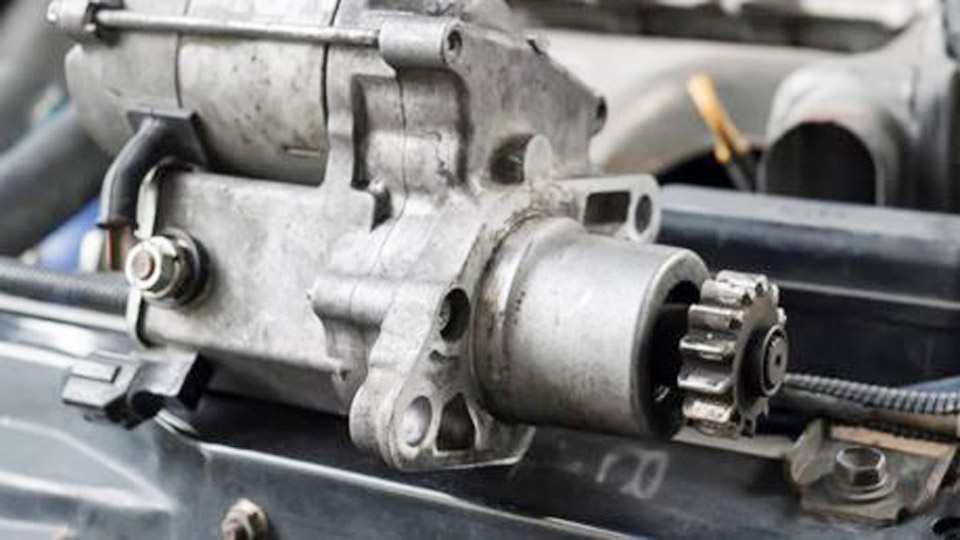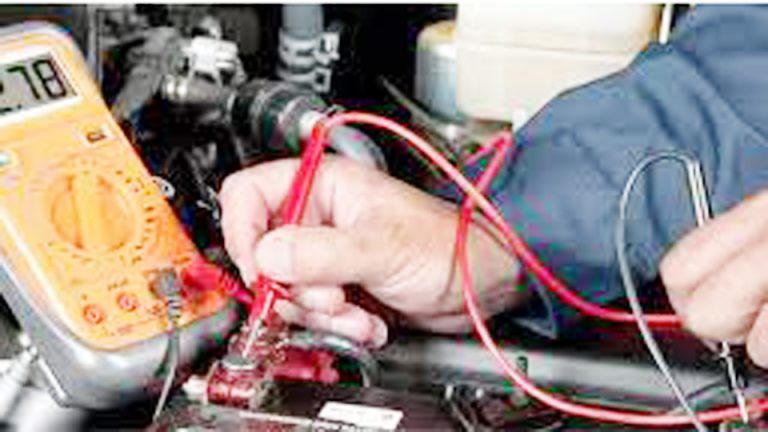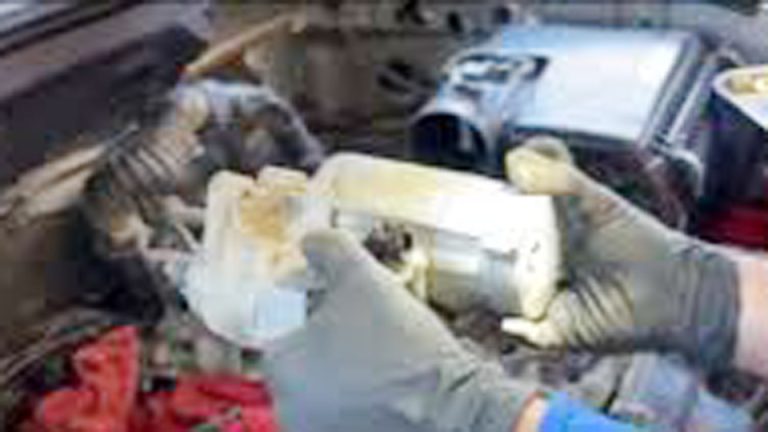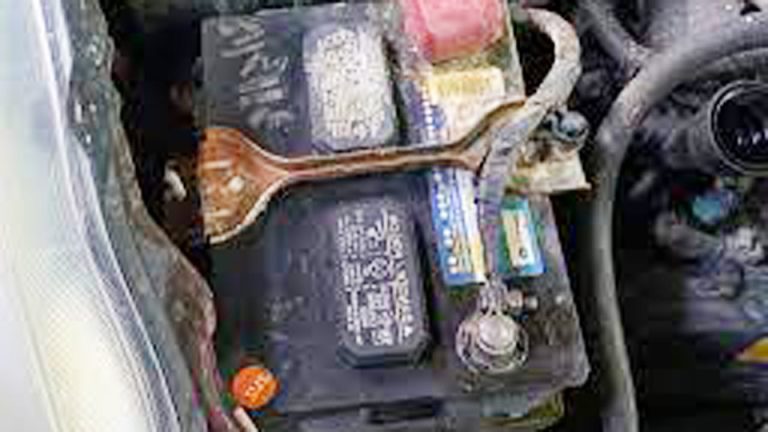There’s nothing worse than turning the key in your car and hearing nothing but a click—or worse, dead silence. I’ve been there, stuck in my driveway on a Monday morning, wondering how long it takes to get a starter replaced. I’ve replaced more starters than I can count.
It’s one of those repairs that sounds intimidating but isn’t as bad as it seems. If you’re taking your car to a shop or tackling it yourself, I’ll walk you through the process, share what I’ve learned, and give you a clear idea of the time involved.
Starters are the unsung heroes of your engine, and when they fail, you’re not going anywhere. I remember the first time I dealt with a bad starter—it was on my old coupe, and I was stranded at a gas station.
Since then, I’ve gotten pretty good at spotting the signs and fixing the problem. I’ll break down how long it takes to replace a starter, what affects the timeline, and how you can avoid getting stuck again.

Image by mendmotor
What Does a Starter Do?
Before we talk about replacing a starter, let’s cover what it does. The starter is a small electric motor that gets your engine going. When you turn the key (or push the start button), the starter spins the engine’s crankshaft, kicking off the combustion process.
It’s a tough little component, but it’s not built to last forever. I’ve seen starters go bad on everything from high-mileage trucks to barely-driven compacts.
The starter is usually bolted to the engine or transmission, with wires connecting it to the battery. It’s not a complicated part, but getting to it can be a pain depending on your car.
I learned this the hard way working on a friend’s SUV—the starter was buried under a maze of hoses and brackets. Knowing how it works helps you understand why replacing it takes the time it does.
Signs Your Starter Is Going Bad
When your starter’s on its way out, it doesn’t usually fail without warning. I’ve learned to spot the signs after dealing with enough no-start situations. Here’s what I look for:
Clicking Noise: When you turn the key and hear a loud click or series of clicks, the starter’s solenoid might be engaging, but the motor isn’t turning. This happened to my old sedan, and it was a dead giveaway.
Grinding or Whirring: If you hear a grinding noise when starting, the starter’s gear might not be meshing with the engine’s flywheel. I’ve heard this on older cars with worn starters.
No Sound at All: If nothing happens when you turn the key, the starter could be dead—or it might be a battery issue. I always check the battery first to avoid unnecessary work.
Intermittent Starting: Sometimes the car starts fine, other times it struggles. I had a truck that did this for weeks before the starter finally gave up.
If you’re noticing these symptoms, it’s time to think about replacing the starter. Ignoring them can leave you stranded, like I was at that gas station years ago.
How Long Does a Starter Replacement Take?
So, how long does it take to get a starter replaced? It depends on whether you’re doing it yourself or taking it to a shop, and a few other factors like your car’s make and model. Based on my experience, here’s the breakdown:
At a Shop: Most mechanics can replace a starter in 1 to 3 hours. For a straightforward job on a car with easy access—like a compact sedan—it’s closer to 1–2 hours.
But if the starter’s buried (like in some SUVs or trucks), it can take 2–3 hours. I took my cousin’s minivan to a shop once, and they had it done in about 2 hours, including diagnostics.
DIY: If you’re doing it yourself, expect 2 to 4 hours, depending on your skill level and the car. My first starter replacement took me 3 hours because I was figuring it out as I went. Now, I can do it in about 2 hours on a good day.
The time varies because of things like the car’s design, the tools you have, and whether you run into surprises—like rusted bolts or tight spaces. I’ve had jobs that should’ve been quick but turned into half-day projects because of a stubborn bolt.
Here’s a quick table to give you an idea of time and cost based on my experience:
| Replacement Type | Time Estimate | Cost Estimate | Difficulty Level |
|---|---|---|---|
| Professional Mechanic | 1–3 hours | $200–$500 (parts + labor) | N/A |
| DIY (Beginner) | 2–4 hours | $80–$200 (parts only) | Moderate |
| DIY (Experienced) | 1.5–3 hours | $80–$200 (parts only) | Moderate |
Costs depend on your car and where you live, but this is what I’ve seen working on cars in the USA.
Factors That Affect Replacement Time
Not all starter replacements are created equal. I’ve learned that a few things can make the job faster or slower:
Car Make and Model: Some cars, like older Hondas or Toyotas, have starters that are easy to reach. Others, like certain BMWs or trucks, hide the starter in tight spots. I once worked on a pickup where I had to remove the wheel well liner to get to the starter—talk about a headache.
Access to Tools: A good socket set, wrenches, and a jack make the job quicker. When I started out, I didn’t have a ratchet set, and loosening bolts by hand added at least an hour.
Condition of Bolts: Rusted or seized bolts can turn a 2-hour job into a 4-hour ordeal. I keep a can of penetrating oil handy for this reason.
Experience Level: If you’re new to car repairs, you’ll need extra time to figure things out. My first DIY starter replacement was a learning curve, but now I can do it with my eyes half-closed (not literally, of course).
Shop Efficiency: At a garage, the mechanic’s experience and workload matter. A busy shop might take longer if your car’s waiting in line.
I remember helping a friend replace the starter on his old muscle car. The starter was right up front, and we had it done in under 2 hours. But on another job, a compact SUV took almost 4 hours because the starter was tucked under the intake manifold. Every car’s different, so be ready for surprises.
DIY Starter Replacement Process
If you’re thinking about replacing the starter yourself, let me walk you through how I do it. I’ve done this enough times to have a system, but I’ll keep it simple so anyone can follow along. Here’s what I do:
First, I make sure the car’s off and the keys are out of the ignition. Safety first—you don’t want the engine cranking while you’re under there. Then, I disconnect the battery’s negative terminal (the black one) to avoid any electrical shocks. I learned this the hard way when I got a small zap working on an old car.
Next, I locate the starter. It’s usually near the bottom of the engine, bolted to the transmission or bell housing. On some cars, you’ll need to jack up the front end and crawl underneath. I always use jack stands for safety—never trust a jack alone.
Once I find the starter, I disconnect the wires attached to it. There’s usually a thick power cable and a smaller signal wire. I label them with tape to avoid confusion later.
Then comes the fun part: removing the starter. It’s typically held in place by two or three bolts. I use a ratchet and the right socket size—usually 13mm or 15mm, but it varies. If the bolts are rusted, I spray them with penetrating oil and let it sit for 10 minutes. I’ve had bolts so stubborn I thought I’d snap my wrench, but patience (and oil) usually wins.
With the bolts out, I wiggle the starter free and pull it out. Installing the new one is the reverse: slide it into place, tighten the bolts, reconnect the wires, and hook the battery back up. Before starting the car, I double-check everything. The first time I did this, I forgot to tighten a bolt, and the starter vibrated like crazy. Lesson learned.
Finally, I start the car to test it. If it cranks smoothly, I’m good to go. If not, I check the connections and make sure I didn’t miss anything. The whole process takes me about 2 hours now, but it might take you longer if it’s your first time.
Taking It to a Mechanic
If DIY isn’t your thing, a professional mechanic is a solid option. I’ve taken cars to shops when I’m short on time or the job’s too tricky. Most mechanics follow a similar process to what I described, but they’ve got better tools and experience, so it’s usually faster.
When I took my cousin’s minivan to a shop, they diagnosed the starter in about 15 minutes using a scan tool and a quick listen. The replacement took 2 hours, and the total bill was around $300, including parts and labor.
The shop I go to is trustworthy, but I always recommend getting a quote upfront and asking how long the job will take. Some shops charge flat rates based on a labor guide, while others bill by actual time.
One thing to watch out for: some shops might try to upsell you on extra services, like a new battery or tune-up. I always ask if it’s necessary and check my car’s condition myself first. If your battery’s fine and the starter’s the only issue, don’t let them talk you into more than you need.
Common Problems During Starter Replacement
No repair goes perfectly every time, and I’ve hit plenty of snags replacing starters. Here are some issues I’ve run into and how I deal with them:
Tight Spaces: Some cars hide the starter in spots that are tough to reach. I once worked on a sedan where I had to remove an air intake to get to the bolts. A flexible ratchet or universal joint can help.
Rusted Bolts: Corrosion is the worst. I spray penetrating oil and tap the bolts lightly with a hammer to break them loose. If they’re really stuck, heat from a propane torch (used carefully) can help.
Wiring Mix-Ups: Mixing up the starter’s wires can cause problems. I always label them or take a picture before disconnecting anything.
Wrong Part: I once bought a starter that didn’t fit because I didn’t double-check the part number. Always verify the make, model, and engine size when buying a replacement.
Being prepared for these hiccups can save you time and frustration. I keep a well-stocked toolbox and a can-do attitude for just these kinds of challenges.
Tips to Avoid Starter Problems
Over the years, I’ve picked up a few tricks to keep starters (and cars) running smoothly. Here’s what I recommend based on my experience:
Check Your Battery: A weak battery can strain the starter. I test my battery’s voltage every six months with a multimeter to catch problems early.
Clean the Terminals: Corrosion on battery terminals can reduce power to the starter. I clean mine with a wire brush and baking soda paste once a year.
Listen for Warning Signs: If your car’s slow to start or makes weird noises, don’t wait. I ignored a clicking sound once and ended up stranded.
Avoid Short Trips: Constant short drives can wear out the starter and battery. I try to take longer drives occasionally to let the alternator recharge everything.
Choose Quality Parts: Cheap starters might save you money upfront, but they don’t last. I stick with reputable brands like Bosch or Denso for replacements.
Getting Back on the Road
Figuring out how long it takes to get a starter replaced isn’t just about numbers—it’s about knowing what to expect and being prepared. Whether you’re doing it yourself in 2–4 hours or letting a mechanic handle it in 1–3 hours, the key is understanding the process and catching problems early.
I’ve been through enough no-start situations to know how frustrating they are, but there’s nothing more satisfying than turning the key and hearing the engine roar to life.
Cars are like old friends—they need a little care to keep them happy. With some basic tools, a bit of patience, and the tips I’ve shared, you can tackle a starter replacement or at least know what to expect at the shop.
FAQ
How long does it take to get a starter replaced at a shop?
At a mechanic’s shop, replacing a starter usually takes 1 to 3 hours, depending on the car’s design and the shop’s workload. Simple jobs on compact cars might take closer to 1 hour, while trucks or SUVs with tricky access can take up to 3 hours.
How long does it take to replace a starter yourself?
If you’re doing it yourself, expect 2 to 4 hours for a starter replacement. Beginners might need closer to 4 hours, while experienced DIYers can often finish in 2 hours or less, assuming no major issues like rusted bolts.
How much does it cost to replace a starter?
The cost to replace a starter is typically $200 to $500 at a shop, including parts and labor. DIYers can expect to spend $80 to $200 on a new starter, depending on the car’s make and model.
How do I know if my starter is bad?
A bad starter might cause a clicking noise when you turn the key, a grinding sound, or no sound at all. If the car starts inconsistently or struggles to crank, the starter is likely the issue, though you should check the battery first.
Can I drive with a bad starter?
If your starter’s failing, you might get a few starts out of it, but it’s risky. A bad starter can leave you stranded at any time, so it’s best to replace it as soon as you notice symptoms.
What tools do I need to replace a starter myself?
You’ll need a socket set, wrenches, a jack, jack stands, and possibly a screwdriver. Penetrating oil and a wire brush are handy for dealing with rusted bolts or dirty connections.




